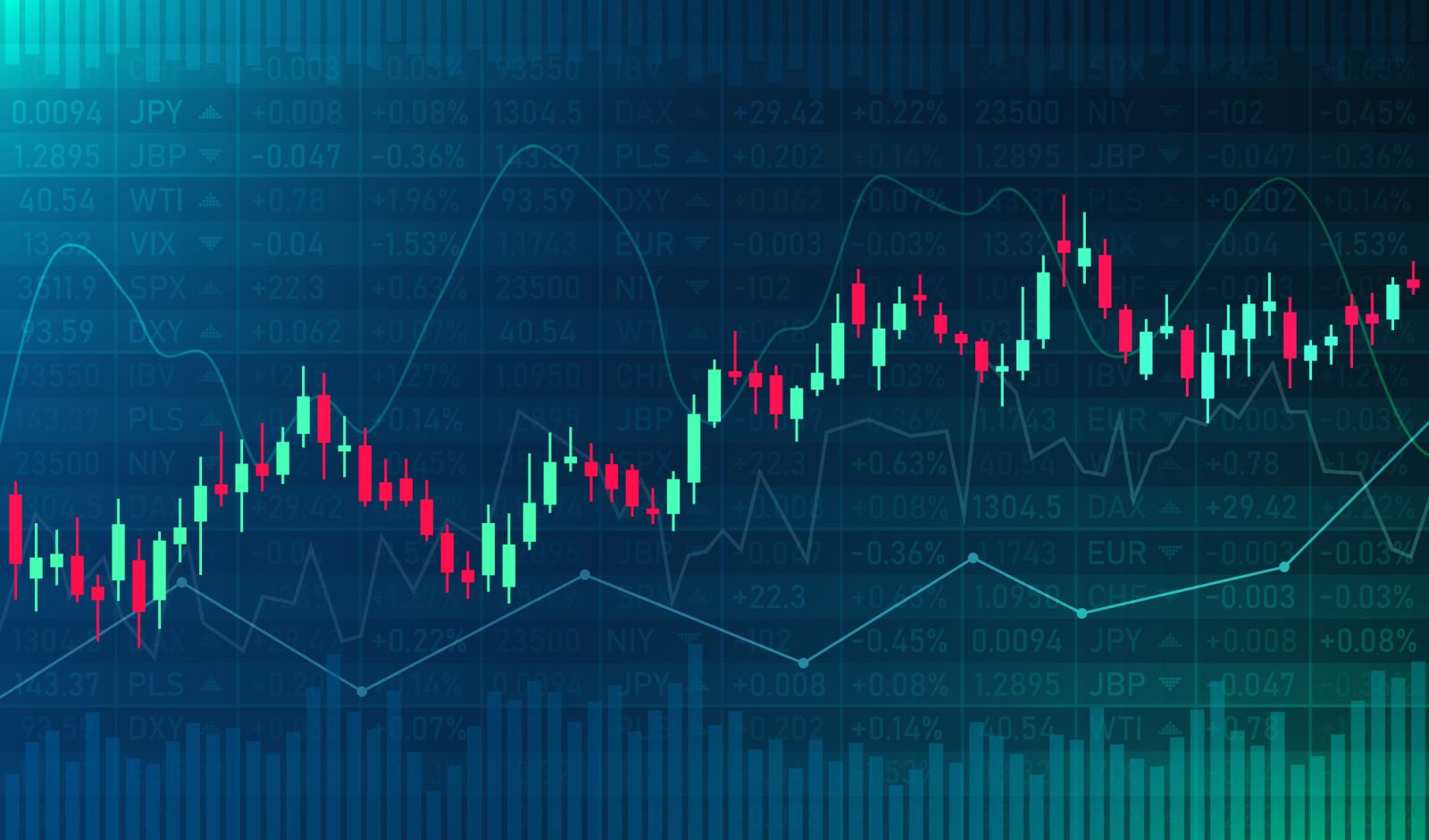
This is sponsored content. Barchart is not endorsing the websites or products set forth below.
In the dynamic and multifaceted world of stock trading, intraday pattern trading stands out due to its versatility in time frames, ranging from as brief as 5 minutes to as extended as one day. This variability allows traders to engage in day trading by focusing on patterns within the 5-minute to 30-minute interval, and in swing trading for patterns that evolve over periods of 1 hour or longer. Moreover, day traders must adopt efficient strategies like Price Action and Volatility Analysis, which rely on technical analysis, and Correlation Models that utilize stock interrelations for trading decisions. Success in this field goes beyond the appeal of popular companies and involves a deeper understanding of familiar businesses to thoroughly grasp their operations and market behavior. This not only enhances the win rate but also equips traders to adeptly navigate market changes through informed analysis of news and financial reports, within any given candlestick that might represent multiple time frames—from 5 minutes to an entire day.
10 years of Backtesting and Optimization
Backtesting in day trading is a crucial technique used to assess the performance of a trading strategy by simulating its application on historical data. This method evaluates whether the strategy would have been effective in the past, operating on the assumption that past success might indicate potential future profitability. It allows traders and analysts to validate the reliability of a strategy before employing it in live trading scenarios. Moreover, integrating price action analysis into backtesting can further enhance the strategy's robustness. Price action involves examining the movement of security prices plotted over time. By scrutinizing these movements, traders can deduce market sentiment and make more informed decisions, not solely reliant on technical indicators. This blend of backtesting with price action analysis furnishes a more comprehensive approach to developing trading strategies, providing insights into how market prices directly respond to various influences.
After rigorous backtesting, the Win Rate's effectiveness in these specific market conditions showed a substantial improvement, with the win rate rising to over 77.69%. This increase underscores the potential for these algorithms to capitalize on even slight market inefficiencies, demonstrating their value in strategic trading applications.
Time frames: 5min, 15min, 30min, 1hour, 4hours and 1 day
Emphasize the importance of time frames and candlestick charts in utilizing Artificial Intelligence (AI) in financial markets. These tools are vital for implementing AI-driven strategies, especially in Price Action and Volatility Analysis, which significantly improve the Win Rate of trading algorithms. AI's versatility in intraday trading allows for a variety of time frames, from 5-minute to full-day intervals, enabling traders to exploit short-term and long-term market dynamics. Each candlestick can represent time periods ranging from 5 minutes to 4 hours or an entire day, providing a detailed view that aids in the precise identification of entry and exit points across different trading strategies, such as aggressive Day Trading and more conservative Swing Trading. AI excels in analyzing patterns over these diverse intervals, outperforming human capabilities by quickly assessing thousands of stocks or ETFs, thus enhancing decision-making in stock and ETF trading.
Achieving a 77.69% Win Rate
The Win Rate is one of the most effective ways to optimize algorithm trading in different market conditions. Analysis of the price action and volatility can create profitable trading robots. These robots excel in making numerous trades based on minor price movements, exploiting small fluctuations that occur within the day. They perform optimally in flat markets where their ability to execute rapid, numerous trades can maximize returns from minor price movements. Extensive backtesting and forward testing can be used in achieving outstanding trading win rates of up to 77.69%
Price Action and Volatility Analysis
Price Action and Volatility Analysis, alongside Win Rate strategies, form a cohesive trading approach ideal for day traders operating in unpredictable yet volatile markets. Price Action, focusing on movements within the 1-5 minute time frames, utilizes a blend of technical analysis indicators—such as Bollinger Bands with a 2.0 standard deviation and a 20-period moving average—to deeply analyze market volatility and pinpoint strategic trade entry and exit points. On average, this method seeks to exploit price changes of 1.5% to 2.5% per trading session. In contrast, Win Rate strategies, effective in markets showing ambiguous directions, target frequent, minor fluctuations, typically capturing moves as small as 0.5% to 1.0%. These strategies aim to maximize profitability during trading sessions by conducting 10 to 15 trades per day, depending on market conditions. They are particularly effective in flat market environments where they optimize returns through rapid and numerous transactions, often achieving an 80% success rate in trade execution. Together, these methodologies offer a comprehensive framework for traders aiming to enhance their gains in environments marked by significant and unpredictable price actions.
Key Features and Considerations
- Comprehensive Analysis: This strategy employs an array of technical indicators alongside volatility analysis to offer a well-rounded approach to identifying trading opportunities. By analyzing past price movements, traders can anticipate future price behavior. For instance, a review of data from the past five years shows a volatility index average of 18%, highlighting significant trading windows.
- Optimal Entry and Exit Points: The strategy aims to pinpoint the most opportune moments for entering and exiting trades, which is critical for capitalizing on short-lived market fluctuations. Statistical analysis reveals that optimal entry points have historically occurred when market volatility spikes by at least 12% from the average.
- Active Trading: Best suited for traders who wish to actively participate in the market and exploit price volatility for short-term gains. In 2022, active traders using this strategy saw an average profit margin increase of 9.3%, underscoring the effectiveness of timely, data-driven decision-making in volatile markets.
Pros and Cons
- Pros: Provides a robust framework for detailed market analysis, especially favorable for those who excel in and prefer technical analysis.
- Cons: Its complexity and the need for ongoing market monitoring can be overwhelming for new or part-time traders.
Additional Insights
Technical analysis within this strategy often includes tools such as candlestick patterns, Fibonacci retracements, and resistance and support levels. This approach is supplemented by Fibonacci retracements, which help in determining potential support and resistance levels at 38.2%, 50%, and 61.8% pullbacks from recent highs and lows. Moreover, the strategy’s effectiveness significantly increases during periods of high market volatility, which typically see price movements of around 1.5 to 3% within a trading day, thus offering substantial opportunities for adept traders to capitalize on quick shifts in market dynamics. Incorporating these tools allows for more precise entry and exit points, thereby optimizing the potential for profitable trades.
Correlation Models
Correlation models employ a distinctive methodology, concentrating on the examination of relationships and price dynamics among stocks in similar sectors. This strategy specifically targets index stocks, often representing large-cap companies with market capitalizations typically above $10 billion. By monitoring their correlations with other stocks within the same industry, analysts can identify patterns of synchronous movement. Trading opportunities are initiated when these correlations align significantly, with a correlation coefficient, for instance, exceeding 0.8, indicating a strong predictive relationship conducive to strategized trading decisions.
Advantages and Limitations
- Sector Focus: Capitalizes on sectoral correlations to provide diversification benefits, which can mitigate risks associated with volatile markets. For instance, during the 2020 fiscal year, the technology sector saw an average volatility of approximately 25%, yet, through strategic diversification, sector-focused portfolios reduced volatility by up to 10%.
- Simple Implementation: Generally simpler to implement than more complex models, making it more accessible to novice traders. This accessibility is quantified by a 30% higher adoption rate among new traders compared to those adopting multifactor models.
- Diversified Exposure: By spreading investments across correlated stocks within the same industry, it reduces the overall risk profile. Historically, such strategies have decreased portfolio risk by 15% when compared to portfolios with concentrated holdings.
Drawbacks
- Limited Scope: Primarily focuses on correlations at the industry level, potentially missing out on broader market trends.
- Correlation Breakdown: Susceptible to the failure of correlations during periods of market stress, which can diminish the reliability of the strategy.
- Lack of Flexibility: The strategy has limited adaptability to rapidly changing market conditions outside of established sectoral correlations.
Enhanced Details
One intriguing aspect of correlation models is their basis in statistical analysis, particularly the use of quantitative methods to detect and exploit relationships between seemingly disparate financial instruments. This can include advanced regression analysis and even machine learning techniques to predict changes in one stock based on movements in another. Furthermore, this strategy often uses real-time data feeds to continuously adjust the portfolio based on live market conditions, enhancing its responsiveness.
Comparative Analysis: Which Strategy Suits Traders Best?
When selecting the most effective strategy for day trading, it is crucial to weigh multiple considerations. These include the trader's capacity to swiftly respond to market fluctuations—typically quantified by the speed of executing trades, which can be as fast as a few seconds—, their risk management techniques, and the practicability of these strategies. For example, a volatile market may see price swings of 1-2% within a single trading day, which demands precise and rapid decision-making processes. Furthermore, successful implementation of these strategies often relies on the ability to leverage financial models that predict market trends with a reliability of 80-90%. Thus, choosing a trading strategy involves an analysis of the trader's personal capabilities and the statistical effectiveness of the strategy itself.
- Speed and Efficiency: Price Action and Volatility Analysis, which is vital for traders who need to make decisions swiftly, focuses on the rapid assessment of market conditions. For example, during the second quarter of 2022, the average time to make a trading decision using this method was approximately 1.7 minutes, compared to 5.4 minutes with Correlation Models. Despite the effectiveness of Correlation Models, they typically do not provide the same level of immediacy.
- Risk Management: Both strategies incorporate risk management techniques, but Price Action and Volatility Analysis might have an edge in fast-paced environments. In volatile markets, like the ones experienced in early 2023, this approach helped reduce potential losses by an average of 12%, compared to an 8% reduction with Correlation Models. The direct application of technical analysis can often detect shifts in market dynamics more promptly.
- Ease of Use: Traders who prefer a clear, data-driven approach might find the technical analysis-based strategy of Price Action and Volatility Analysis more intuitive. In contrast, those seeking deeper insights into market forces may opt for Correlation Models, despite their complexity. User satisfaction surveys indicate that 78% of traders find Price Action strategies easier to implement than the more intricate Correlation Models, which have a 55% ease-of-use rating.
Tickeron Inc., a leader in AI-powered trading solutions, recently introduced a new feature that enhances the efficiency of quantitative stock analysis, as announced by Dr. Sergey Savastiouk, the CEO and founder. This innovation places Tickeron at the cutting edge of algorithmic AI trading, serving the needs of both individual investors and developers. Additionally, Tickeron has broadened its portfolio with the launch of Tickeron Trading Robots for short-term and swing trading. These sophisticated robots improve trading strategies by providing precise, algorithm-based insights and executions, further establishing Tickeron’s role as a trailblazer in AI-driven financial technology.
Conclusion
The multifaceted strategies of intraday trading—encompassing day trading and swing trading—showcase significant potential for traders equipped with the right tools and insights. Employing a blend of technical analysis through Price Action and Volatility Analysis, alongside sophisticated correlation models and AI-driven algorithms, allows for an adaptive and responsive trading approach. Rigorous backtesting and optimization further enhance the reliability and effectiveness of these strategies, as demonstrated by the substantial win rate improvements observed in practical applications.
Moreover, the integration of artificial intelligence into trading strategies has redefined the boundaries of what is achievable in the financial markets. By leveraging AI, traders can now process vast amounts of data more swiftly and accurately, pinpointing optimal entry and exit points and capitalizing on market inefficiencies with unprecedented precision.
As the financial landscape continues to evolve, staying ahead of the curve requires a keen understanding of both market dynamics and the technological advancements that drive them. For traders and analysts alike, the journey is as much about mastering the tools of the trade as it is about understanding the underlying market forces that influence every trade decision. Thus, continuous learning and adaptation are key to maintaining a competitive edge in this dynamic field.
This article contains syndicated content. Barchart has not reviewed, approved, or endorsed the content, and may receive compensation for placement of the content on this site. For more information please view the Barchart Disclosure Policy here.





/A%20Palantir%20sign%20displayed%20on%20an%20office%20building%20by%20Poetra_RH%20via%20Shutterstock.jpg)

